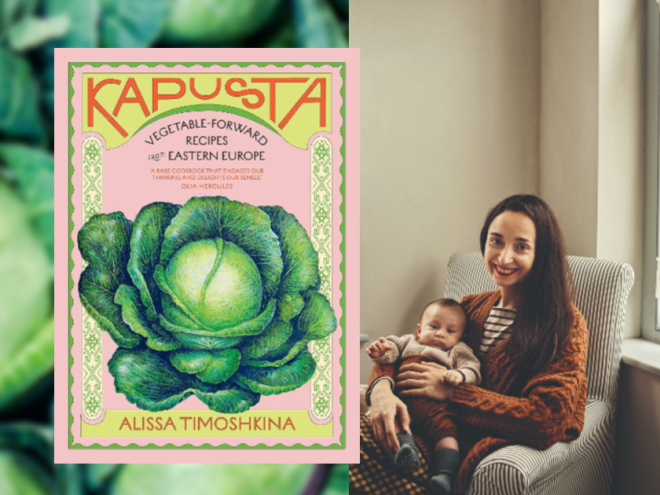Be prepared to fall in love with dill and sour cream. This is the advice I shared with my fiancée when I started to cook my way through Alissa Timoshkina’s Kapusta: Vegetable-Forward Recipes from Eastern Europe. She was skeptical at first, but soon began to look forward to dill’s herbaceous slap and the velvety tang of sour cream — ubiquitous elements of Eastern European cuisine — in their native dishes. In the end, we were both deeply grateful to Timoshkina for illuminating an old world of foods and foodways for a global audience.
This book is organized into seven sections: cabbage, beet, potato, carrot, mushroom, dumplings, and pickles & ferments. By using this format, Timoshkina escapes conventional recipe categorizations (i.e., entrée, side dish, appetizer, etc.) while also giving readers-qua-cooks a thorough cultural history of these ingredients and genres. Throughout the book, Timoshkina orients the reader by including numerous introductions — defining Eastern Europe at the outset, showcasing the principal ingredient or genre at the beginning of each section, and vividly describing the textures and flavors before every recipe. Hungarian, Polish, Tatar, Ukrainian, etc. variations; brief etymologies; and explanations as to why particular dishes ought to be considered part of the regional gastronomic oeuvre are especially helpful.
The recipes and corresponding photos in this book are heimish—cozy, casual, and oozing with old-world shtetl charm. One standout dish is the beet and rye chocolate cake. This earthy, moist, and subtly spiced cake was a clear winner at my Shabbat table, with guests asking for multiple slices all weekend. The rye gives this a mild chai-like spice that pairs exceptionally well with the chocolate ganache, taking this from a lovely snacking cake to a festive, better-than-birthday chocolate cake. (I recommend adding a tablespoon of cocoa to the dry ingredients and separately using coconut cream to make a parve ganache.)
One of the most heartwarming (and modern) dishes included in the book is “Rosie’s Buckwheat Stir-Fry,” a mushroom kasha kimchi dish developed by Timoshkina’s four-year old daughter. It’s a dish with deep Slavic roots that pairs exceptionally well with “Cabbage and Fennel Braised in a Creamy Sauce.” Like so many dishes in this book, this can be adapted to your pantry: use gribenes or shmaltz for a kasha varnishkes vibe; serve it with a fried/poached egg for brunch; lighten it up with some hearty greens in the winter, asparagus in the spring, or zucchini in the summer; or season it with paprika, cumin, and white pepper.
I am excited to continue cooking from this book and welcoming the flavors of Eastern Europe into my home. The recipes are simple, and the flavors profound. Make sure you have some quality rye bread on hand (I’m talking the dense, dark loaves that Sholem Aleichem described; not the “pumpernickel” rye made with only a whisper of this grain), as many of the salads, soups, and shmears call for a couple of slices.
Avery Robinson is a Jewish nonprofit professional living in Brooklyn. In his spare time, he freelances as an editor, culinary historian, cofounder of the climate change nonprofit Rye Revival, and manager of Black Rooster Foods. His writings have appeared in Marginalia Review of Books, Jerusalem Post, TabletMag, and The Forward.





